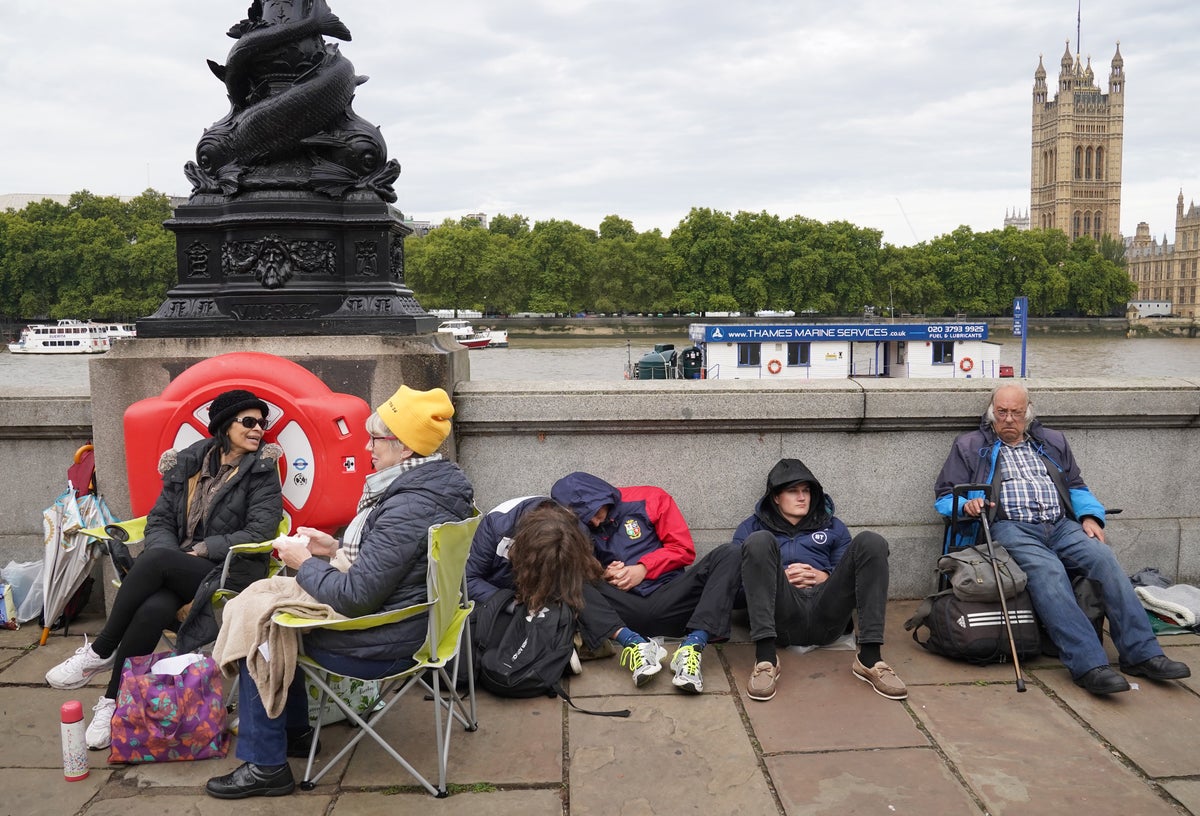
The queue to view the Queen’s lying-in-state will be temporarily closed to new entrants if it reaches 10 miles, it has been confirmed.
The route for members of the public waiting to pay their respects to Her Majesty during the four days her coffin will rest in Westminster Hall stretches 6.9 miles over the Thames and along the South Bank to Southwark Park.
But airport-style zig-zag queuing channels have been installed both in Victoria Palace Gardens and Southwark Park, increasing the full maximum length of the line to 10 miles.
New entrants to the queue will be paused when this point is reached, and will be halted altogether as the final viewing time of 6.30am on Monday approaches, to try to ensure that no-one who joins the line will be turned away at the door to Westminster Hall.
The Department for Culture has consulted with behavioural scientists to try to judge how tightly packed and slow-moving queues are likely to be, in order to make preparations for how to deal with what is expected to be massive logistical operation.
There are no official estimates for how many members of the public will join the queue, though insider said they were expecting “far more” than the 200,000 who filed past the Queen Mother’s coffin in 2002.
At any given point during the lying in state, which begins at 5pm on Wednesday, there will be more than 1,000 marshals, stewards, volunteers and police on hand to assist queuers and maintain order.
These include some 779 professional stewards on each of three eight-hour shifts each day, assisted by 100 civil service volunteer marshals, 40 adult Scouts, 30 members of the first aid nursing yeomanry.
Some 10 members of the Red Cross will be on duty for each shift to assist those in the queue, along with 30 multi-faith pastors co-ordinated by Lambeth Palace and six Samaritans to help with any personal crises experienced by attendees.
In all, some 140 Red Cross volunteers, 120 from the Scouts, 170 from the Salvation Army and 600 from St John’s Ambulance will help with the operation, with 1,500 military personnel on stand-by if needed.
More than 500 portable toilets have been sited along the route, and the South Bank Centre and Tate Britain are opening their facilities to queuers.
Coloured and numbered wristbands will allow individuals to reclaim their place in the queue after leaving to use toilets or fetch food and drink.
And stewards have been briefed to watch out for anyone struggling with the long wait, so they can be taken out for breaks before returning to the queue if appropriate.
Estimates of waiting times will be issued by the Department for Digital, Culture, Media and Sport (DCMS) via social media channels, as well as by stewards on the ground and large screens which have been erected along the route.
People arriving at the Houses of Parliament will be told they must must not linger once inside, but must keep the queue continuously moving as they pass through Westminster Hall in two lines - one on either side of the catafalque on which the Queen’s coffin will be placed.
No proof of disability will be required from people seeking to join the accessible queue set up for those unable to take part in the full queue, with stewards on the ground using their own judgement to decide who is eligible.
Government sources denied that warnings about the length and duration of queues were intended to put people off coming to London to attend the lying-in-state.
The government wants as many people as possible to take part in the event, but wants them to be prepared for the conditions they will find, they said.







